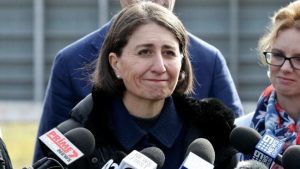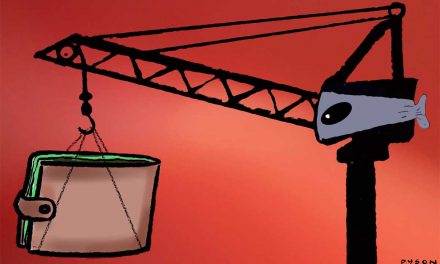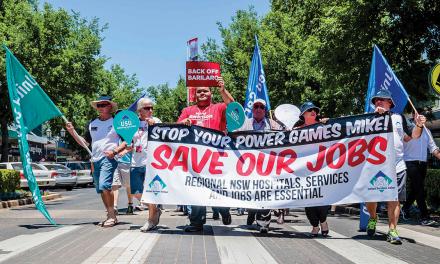An article in yesterday’s Australian newspaper raises concerns about how the NSW Government plans on paying for planned infrastructure in the face of rising government debt. Former premier Mike Baird sold half of Ausgrid and the whole of TransGrid back in 2016. Privatisation of our monopoly assets is a con. A state’s assets generate income that pay for our schools, our hospitals, our roads. The effect of privatisation of our electricity assets is already there for all to see – savage cuts to jobs, savage cuts to reliability, and consumers left to foot the bill, literally, through price increases. The USU will fight any attempt to fully privatise our assets and ensure OUR share of OUR assets remain where they belong: in OUR hands. We will fight any attempt to fully privatise Ausgrid.
NSW government facing a funding headache
By Andrew Clennell
NSW POLITICAL EDITOR
The Australian
June 12, 2019

NSW Premier Gladys Berejiklian at the unveiling of a new drought package in the Riverina region of southwest NSW. Picture: Jonathan Ng.
Senior NSW government figures are concerned about keeping a multi-billion-dollar program for infrastructure rolling, with the state expected to be $22 billion in the red by 2021-22.
A week before Treasurer Dominic Perrottet’s third budget — the first since Gladys Berejiklian’s March election win — senior figures say a sale of the state’s remaining electricity assets would help pay for large infrastructure projects such as the Western Metro, and prevent the government going further into debt.
Several senior ministers are said to privately support a sale of the remaining 49.6 per cent of Ausgrid. The 2016 sale of a 50.4 per cent stake raised $16.2bn, helping pay for the Northwest and Southwest metro projects.
In addition to large projects under way, such as the metro lines, WestConnex and light rail, Ms Berejiklian has promised to build the $25bn Western metro to Parramatta, for which the government allocated an initial $3bn in last year’s budget; a $10bn-plus northern beaches tunnel; and fund half of a $7bn rail line to Western Sydney Airport, with the other half to come from the federal government. There is also talk of high-speed rail and more schools and hospitals.
An easy solution to the need for extra funds would be further asset sales. One option would be to sell the rest of the WestConnex motorway, with a sale of the first half reaping $9bn.
But in April Ms Berejiklian ruled out a further sale of electricity assets. “No. I’ll say no because it wasn’t an election platform for us and I do think it’s in the state’s interest to have a little bit of an interest in those businesses,” she said.
Former premier Mike Baird sold half of Ausgrid and the whole of TransGrid in 2016.
Mr Perrottet last week promised to run surpluses despite the government’s big-spending election promises, declining stamp duty receipts and a $2.3bn writedown in GST receipts.
He yesterday compared the 2018-19 debt position of a net positive in NSW with the Queensland figure of $28.4bn and the Victorian figure of $22.8bn.
“NSW is in a very strong position, especially when you look at our position compared to the debt levels of Victoria and Queensland,” Mr Perrottet said. “You only have to look at what those states are doing by hitting people with new taxes and fees.
“The government is committed to building the infrastructure our state needs without saddling future generations with an unmanageable debt burden, and a part of this strategy is the development of the NSW Generations Fund.
“The NGF already has $10bn invested, including $7bn from the sale of WestConnex and this amount is growing.
“The government has no plans to sell the rest of our stake in WestConnex or the retained share of the poles and wires.”
Labor Treasury spokesman Ryan Park said: “The NSW Liberals’ and Nationals’ gift to the people of NSW is the highest state debt on record by 2022.
“This government’s fire sale of our public assets has not only resulted in higher power bills and higher tolls for working families across NSW, it has also left a giant hole in our balance sheet.”




